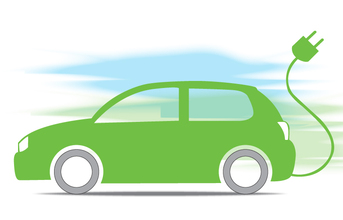

Pure Electric Vehicles (PEVs)
PEVs are designed with only one power source, which is electrical energy from a bank of batteries used to energise the electric motor(s) via a power electronic control system, for propulsion of the vehicle. There are different topologies for PEVs, which can be grouped into two basic categories; an onboard motor connected to the wheel of the vehicle via a shaft and differentials, or an in wheel motor connected directly to the wheel(s) of the vehicle. The figure shows the simple layouts of the various topologies that can be found in the PEV.
• the early topologies where ICE vehicle to be converted
to EV through replacing the combustion engine with and electric motor. The gearing system can come in two types; a fixed ratio type, or designed in the conventional
way where driver can shift the gear ratio using a clutch. The fixed gearing option cannot be used for ICE vehicles as it cannot achieve the required torque-speed curve of the vehicle. The advantage of fixed gearing compared
to gearbox and clutch system is the number and weight of the mechanical parts are greatly reduced.
• Fig 2(b) topology is commonly adopted by modern EVs and has a similar concept to the engine design of most ICE vehicles, where the vehicle has a front-engine in a transverse direction to the front wheels, commonly called a front-wheel drive. The electric motor and fixed gearing are coupled together as an assembly. There are two types to this drive configuration; a complex motor design where the electric motor acts as a source of propulsion and speed differential to the wheels, or by adopting simple motor design and incorporating a mechanical differential to the drive assembly.
• Fig a unique topology where the drive train of the vehicle can be mounted in the wheel which drastically reduces the mechanical transmission. The motors can either be designed as a low torque-high speed motor coupled with fixed planetary gear to step down the speed and increase the torque, or a high torque-low speed motor in which motor is designed to have an outer rotor.
(Continued on the next page)


























